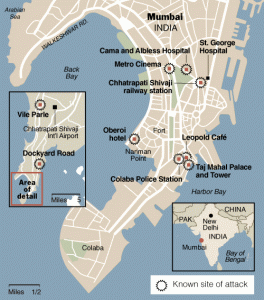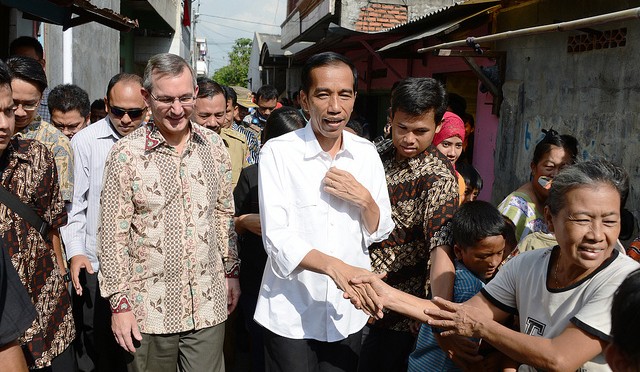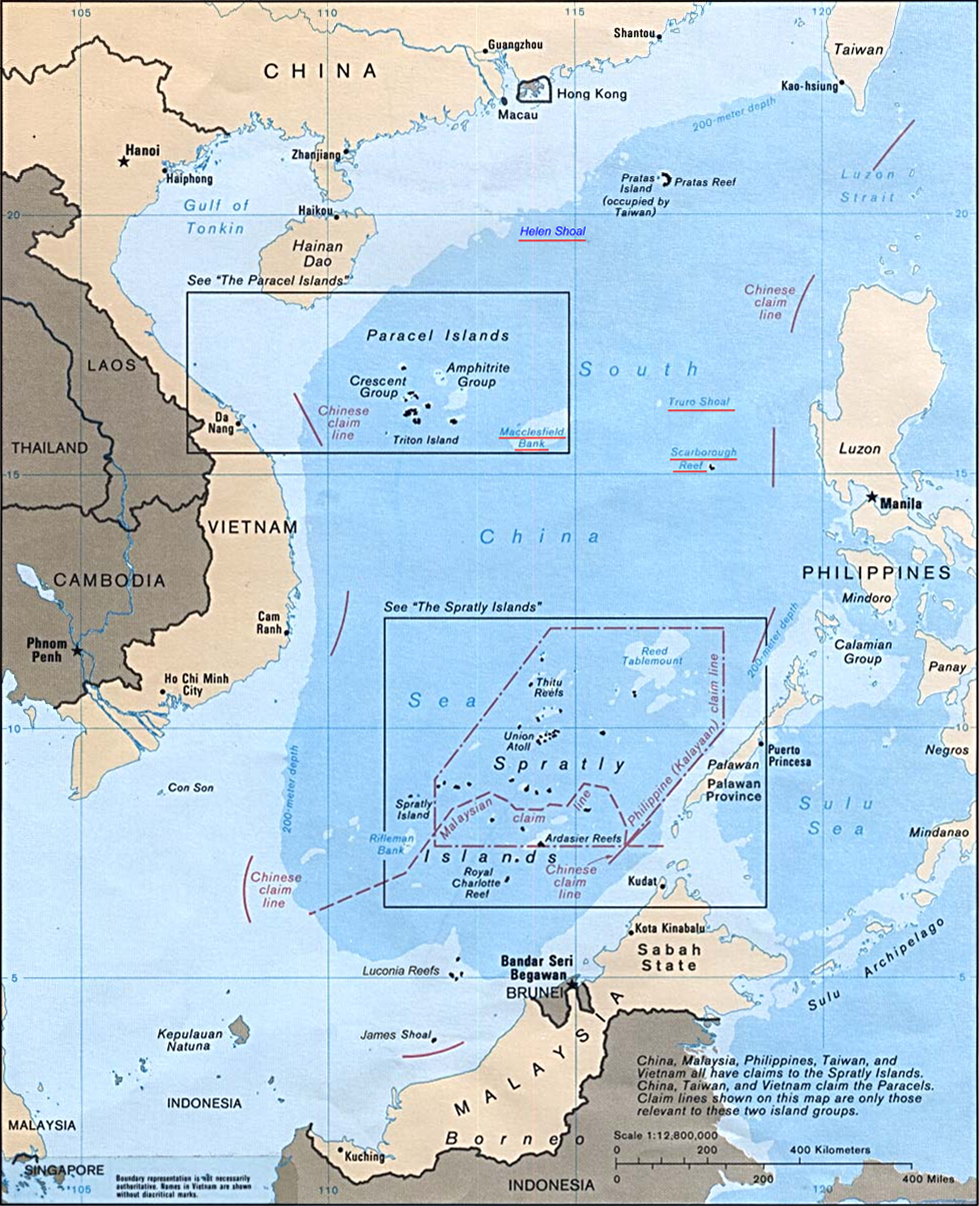…and into the Littorals
In a 1997 speech to the National Press Club that will be familiar to many Navy and Marine Officers, General Charles Krulak, 31st Commandant of the Marine Corps, told the story of Roman consul Publius Varus. Consul Varus was a once successful general whose legions were decimated by Germanic tribes using what we might refer to as asymmetric tactics that left the Roman’s flummoxed. Varus’ last words were recounted as “Ne Cras, Ne Cras,” or “Not like yesterday.” The story presents a challenge to military leaders in our own generation to refrain from getting complacent in their own capabilities, and to continue to adapt their organizations to meet new and unexpected threats.
General Krulak’s went on to introduce the concept of an urban “three block war,” in which combat forces would simultaneously conduct humanitarian relief, peacekeeping, and high intensity combat operations in the space of three contiguous blocks of a complex urban environment. In many ways General Krulak’s words were more prophetic than he could know, as within six years U.S. forces were engaged against an irregular enemy in complex, densely populated urban terrain in Iraq.
American combat troops out of Iraq and on the cusp of departing Afghanistan. This makes it the perfect opportunity to examine old ideas about urban warfare with fresh eyes and look for both the continuities and the differences resulting from a globally connected world and the proliferation of advanced weapons and technologies down to the sub-state level.
Dr. David Kilcullen, an Australian soldier and counterinsurgency specialist who advised U.S. leadership on strategy in Iraq and Afghanistan, has taken a major step in this direction with his new book Out of the Mountains. Kilcullen’s new work analyses the major trends driving the future of conflict around the world. His findings will indeed have far reaching implications for the U.S. military, which has been focused for years on a rural insurgency based in the mountains and deserts of Afghanistan. Conflict will not be as it was yesterday. It will be fought in major coastal urban centers amidst tens of millions of people, and it will span all domains including land, sea, air, and cyber. These conflicts will be complex and will almost never have a purely or even primarily military solution, but their intensity will at the very least require military force to protect and enable other forms of power and influence as they are applied in support of U.S. strategic goals. The U.S. Navy and Marine Corps will need to be adaptable and flexible in order to remain mission-capable in such an environment.
This article will examine the major trends that Kilcullen identifies, and attempt to delve deploy into their military implications. Dr. Kilcullen identifies four “mega-trends” that are shaping the future of humanity, and with it the future of warfare as a human endeavor. These trends include:
- Increasing Population – The U.N. estimates that the global population will continue to increase, especially in developing nations, before leveling off around 9 billion people sometime in the latter half of the century.
- Urbanization – For the first time in human history, more than half of the population worldwide lives in cities.
- Littoralization – Most cities, and certainly the largest ones, are in coastal zones that provide access to seaborne transportation and thus access to the global economy. Kilcullen usefully defines the littorals as the portion of land and air that can be targeted by weapons from the sea, and likewise that portion of sea and air that can be targeted from land.
- Digital Connectedness – Internet and mobile phone access are beginning to saturate markets worldwide, and in some countries access to communications technology outstrips access to sanitation facilities.
The first three of these trends are not news. Kilcullen notes that sociologists have been writing about population and urbanization for decades, and urban conflict was a major focus of military thinking in the 1990s. However, the acceleration of these trends, combined with the burgeoning level of digital connectedness not widely foreseen in the 1990s, means that urban conflicts will take on a new level of violence and intensity that will be broadcast around the world instantaneously. This will provide our adversaries with powerful commercial tools to enable command and control (C2) of independent networked cells in a dynamic battlespace.
 At the operational level, planners can expect warfare to range from the multiple-battalion level assault on Fallujah at the high-end to complex “urban seige” attacks such as Mumbai and Nairobi in the mid-range to the persistent urban violence of the drug wars in Rio de Janeiro’s favelas at the low-end. In each instance, the enemy will be a small, networked, and extremely well-armed group. It will reside in a sea of millions of civilians and be able to call upon commercial digital networks from cell phones to Twitter to collect intelligence, post propaganda, and act as ad hoc C2 nodes to coordinate operations. It will also be able to draw on a massive global transportation system to transport people, weapons, and finances around the world in short order.
At the operational level, planners can expect warfare to range from the multiple-battalion level assault on Fallujah at the high-end to complex “urban seige” attacks such as Mumbai and Nairobi in the mid-range to the persistent urban violence of the drug wars in Rio de Janeiro’s favelas at the low-end. In each instance, the enemy will be a small, networked, and extremely well-armed group. It will reside in a sea of millions of civilians and be able to call upon commercial digital networks from cell phones to Twitter to collect intelligence, post propaganda, and act as ad hoc C2 nodes to coordinate operations. It will also be able to draw on a massive global transportation system to transport people, weapons, and finances around the world in short order.
 In order to flesh out the capabilities of modern networked urban terrorist groups, Kilcullen analyzes in detail the 2008 Lashkar-e-Taiba (LeT) Mumbai assault. LeT’s ground-breaking tactics, which displayed a level of free-flowing swarming ability that is at the very least rare for a sub-state actor, are worth examining. The attack was carried out by multiple cells of just a few individuals each who had conducted a thorough reconnaissance of their targets for nearly a year. The attackers used maritime ratlines normally employed by smugglers to move from Karachi to the port of Mumbai, making landfall in a slum neighborhood with little police presence. Once the assault began, their actions were coordinated via cell- and satellite-phone by a LeT command team operating their own combat operations center in Pakistan (likely with some support from Pakistani ISI). The team used broadcasts from CNN and other media networks to inform their battle tracking and develop an open-sourced understanding of the Indian police response. This allowed the LeT cells to remain several steps ahead of Indian security forces for several days, killing civilians at several high-profile public locations around Mumbai before they were finally surrounded and neutralized.
In order to flesh out the capabilities of modern networked urban terrorist groups, Kilcullen analyzes in detail the 2008 Lashkar-e-Taiba (LeT) Mumbai assault. LeT’s ground-breaking tactics, which displayed a level of free-flowing swarming ability that is at the very least rare for a sub-state actor, are worth examining. The attack was carried out by multiple cells of just a few individuals each who had conducted a thorough reconnaissance of their targets for nearly a year. The attackers used maritime ratlines normally employed by smugglers to move from Karachi to the port of Mumbai, making landfall in a slum neighborhood with little police presence. Once the assault began, their actions were coordinated via cell- and satellite-phone by a LeT command team operating their own combat operations center in Pakistan (likely with some support from Pakistani ISI). The team used broadcasts from CNN and other media networks to inform their battle tracking and develop an open-sourced understanding of the Indian police response. This allowed the LeT cells to remain several steps ahead of Indian security forces for several days, killing civilians at several high-profile public locations around Mumbai before they were finally surrounded and neutralized.
Digital connectedness is also allowing insurgent groups to expand their presence into the global information space that was once the sole purview of states and large corporations. Regular readers of this blog will likely remember that al-Shabaab live-tweeted the recent Navy SEAL raid in Barawe, and after the special operators withdrew, were able to claim victory before Western news outlets even knew the operation had taken place. The militants then followed up by posting pictures of equipment that the SEALs had left behind during their extraction from the firefight. While seemingly trivial, this allowed al Shabaab to stake its claim to the information available on the attack, and perhaps shatter some of the aura of invincibility surrounding the SEALs since their assault on Osama bin Laden and rescue of Captain Richard Philips from Somali pirates.
It is beyond the scope of a single blog post to analyze all of the future trends that Kilcullen examines in detail. Indeed, the book itself is likely just the first of a great deal of research that still needs to be done on the future of urban conflict against evolved irregular or hybrid adversaries in mega-slums and other dense and highly complex urban environments. Much of that research will, of necessity, have to focus on non-military aspects of conflict prevention and mitigation, due to the unavoidable fact that future urban conflicts will be driven by sociological factors inherent to the urban systems where they are being fought. Under Kilcullen’s formulation, urban design and development will in many ways become as important to American policy as foreign aid, governance and economic development, and security sector reform.
The implications for military doctrine and organization will be significant as well. It will impact Naval doctrine, organization, and ship-building plans even as Navy leadership seeks to focus its efforts and budgetary priorities towards AirSea Battle. The same is true for the Marine Corps’ efforts to reposition itself as the nation’s amphibious crisis response force following a decade of warfare in landlocked environments. In following articles, we will examine these implications in depth, and attempt to achieve a better degree of resolution on the future of urban littoral combat and the steps that the Navy and Marine Corps will need to take to remain mission-capable in that environment.
Dan Dewit is a researcher with the Arleigh Burke Chair in Strategy at the Center for Strategic and International Studies in Washington. From 2009- September, 2013 he served as an officer in the U.S. Marine Corps.







_Coronado_(LCS_4)_is_rolled-out_at_the_Austal_USA_assembly_bay.jpg)




 At the operational level, planners can expect warfare to range from the multiple-battalion level assault on
At the operational level, planners can expect warfare to range from the multiple-battalion level assault on 